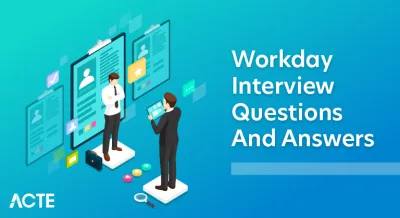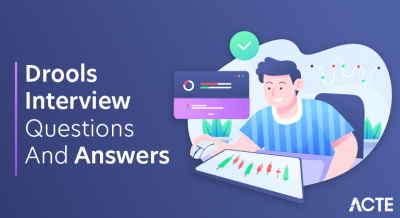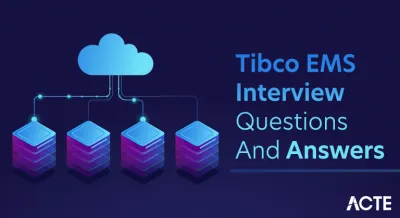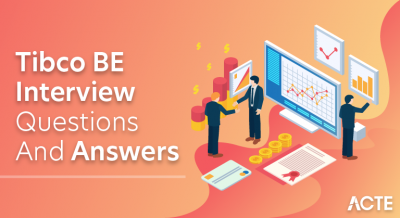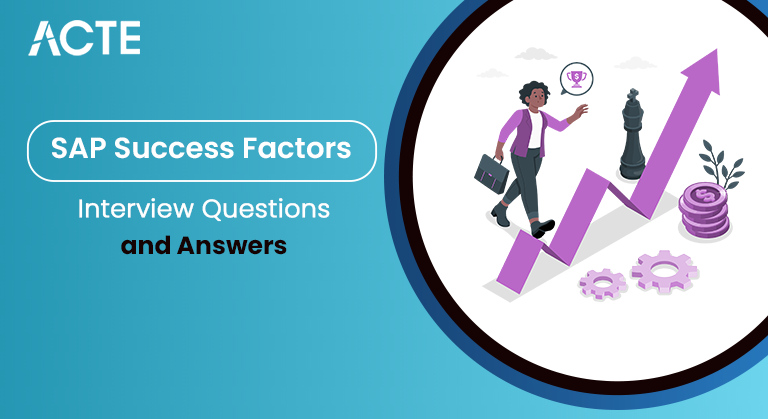
Cloud-based SAP SuccessFactors is a human capital management suite developed by SAP, offering modules such as Employee Central, Performance & Goals, and Learning Management. It focuses on optimizing HR processes, talent management, and workforce analytics while providing a seamless, cloud-based experience. The platform integrates with SAP solutions and third-party applications, emphasizing global accessibility and mobile-friendly features. Regular updates ensure compliance and security, while robust analytics tools enable data-driven decision-making in HR.
1. What are SAP SuccessFactors?
Ans:
SAP SuccessFactors is based on the cloud human capital management suite that provides a broad variety of HR solutions such as talent management, payroll, and workforce analytics. Its linked components are intended to improve employee experiences while optimising HR operations.
2. How can a new user be added to SAP SuccessFactors?
Ans:
- Adding a new user to SAP SuccessFactors involves accessing the Admin Center, selecting the “Manage Users” option, and entering the necessary details such as username, role, and permissions.
- After saving the information, the new user gains access to the relevant modules based on their assigned role.
3. Describe the SuccessFactors process for deactivating an employee?
Ans:
SuccessFactors simplifies the employee deactivation process by allowing administrators to access the Employee Central module, locate the employee record, and initiate the termination process. This involves specifying the termination date, reason, and other relevant details to ensure accurate and efficient handling of the deactivation.
4.What does a “provisioning request” mean?
Ans:
- A “provisioning request” in SuccessFactors refers to a formal request submitted by an administrator to grant or modify user access.
- It involves configuring permissions, roles, and system settings based on the user’s requirements.
- The provisioning process ensures secure and controlled access to SuccessFactors functionalities.
5. Describe Employee Central Payroll and its operation.
Ans:
Employee Central Payroll in SuccessFactors is a module that manages payroll processes. It centralizes payroll data, calculates payments, and ensures compliance with tax and legal requirements. The system automates payroll operations, enhancing accuracy and efficiency in payroll processing.
6.What categories of users can be established inside SuccessFactors?
Ans:
- SuccessFactors supports various user categories, including employees, managers, and administrators.
- Each category is assigned specific roles and permissions, allowing for tailored access to features and functionalities within the system.
7. Describe HRIS. What does it have to do with SuccessFactors?
Ans:
Human Resource Information System, or HRIS, is a software system that handles and consolidates HR data. SuccessFactors connects with HRIS by serving as a cloud-based HCM suite, including additional capabilities like talent management, analytics, and workforce planning in addition to the core HRIS services.
8. Describe the SuccessFactors data replication process.
Ans:
The SuccessFactors data replication process involves synchronizing data across different modules or systems. Changes made in one part of SuccessFactors, such as Employee Central, are replicated in real-time or at scheduled intervals to maintain data integrity and consistency throughout the entire HR ecosystem.
9. How does utilizing SuccessFactors compare to alternative HCM solutions?
Ans:
- Utilizing SuccessFactors offers advantages like scalability, real-time analytics, and a user-friendly interface, setting it apart from alternative HCM solutions.
- Its cloud-based nature ensures easier updates and accessibility, fostering a more agile and efficient HR management process.
10. How does a one-time bonus payout vary from a compensation adjustment?
Ans:
A one-time bonus payout in SuccessFactors is typically a non-recurring, special incentive granted to an employee for exceptional performance or achievements. On the other hand, compensation adjustments that occur regularly are systematic changes, such as annual salary increases or cost-of-living adjustments, affecting an employee’s base pay over an extended period.
11. In SuccessFactors, what role do business rules play?
Ans:
- In SuccessFactors, business rules are essential for automating processes and ensuring consistency.
- They define the logic behind various system actions, such as triggering notifications, updating fields, or enforcing compliance.
- Business rules help organizations tailor the system to their unique requirements and maintain HR processes efficiently.
12. What distinguishes Employee Central Payroll from Employee Central?
Ans:
| Aspect | Employee Central | Employee Central Payroll | |
| Focus |
on HRIS (Human Resource Information System) |
Payroll Management System | |
| Primary Function | Manages HR data and processes | Processes, and manages payroll activities | |
| Data Coverage | Comprehensive employee data | Payroll-specific data and calculations | |
| Scope |
Broader HR functions beyond payroll |
Concentrated on payroll processes |
13. How does SuccessFactors’ performance review procedure operate?
Ans:
- SuccessFactors’ performance review procedure involves setting goals, collecting feedback, and conducting assessments.
- Managers and employees collaborate in the system to track progress, address achievements, and identify areas for improvement.
- Continuous feedback and performance ratings contribute to a comprehensive performance evaluation.
14. What are Manager Self Service (MSS) and Employee Self Service (ESS)?
Ans:
Manager Self Service (MSS) and Employee Self Service (ESS) in SuccessFactors are features that empower managers and employees to handle HR tasks independently. MSS allows managers to perform tasks like approvals, while ESS enables employees to manage personal information, request time off, and access relevant HR information.
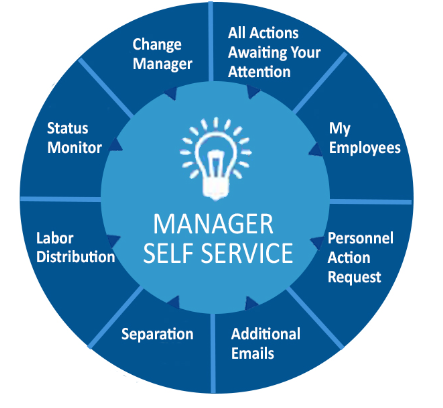
15. Describe OData and the context in which SuccessFactors use it.
Ans:
OData, or Open Data Protocol, is a standardized protocol for building and consuming APIs. SuccessFactors uses OData to facilitate data integration between modules and external systems, ensuring seamless data exchange and interoperability.
16. What distinguishes the SuccessFactors HXM suite from the SuccessFactors BizX?
Ans:
The SuccessFactors HXM (Human Experience Management) suite emphasizes a people-centric approach, focusing on employee experiences and well-being, while the BizX (Business Execution) suite concentrates on core HR functions and business execution.
17. What significance do Success Factors have?
Ans:
SuccessFactors holds significance in optimizing HR processes, enhancing employee engagement, and aligning workforce strategies with organizational goals. Making the right choice involves assessing business needs, scalability, and user experience.
18. What kinds of PLM Software are available?
Ans:
- PLM (Product Lifecycle Management) software comes in various types, including collaborative PLM, engineering PLM, and software PLM.
- The choice depends on specific industry requirements and the stages of the product development lifecycle.
19. How to find Success Factors and What kind of proof to expect?
Ans:
When looking up SuccessFactors, proof can include case studies, testimonials, and industry recognition. Evidence of successful implementations, improved HR efficiency, and positive user experiences contribute to the decision-making process
20. How setting does Nation-Specific Succession Data Model Create?
Ans:
- The nation-specific Succession Data Model is used to configure succession-related data based on regional or country-specific requirements.
- It allows organizations to align succession planning with local regulations and workforce dynamics.
21. What are Employee Central’s Weak Points?
Ans:
Employee Central’s weak spots may include occasional system complexities, limited flexibility in customization, potential integration challenges with other systems, dependency on internet connectivity, and the need for comprehensive training for users.
22. Can you explain Predictive and Preventive Maintenance.
Ans:
Preventive maintenance involves scheduled actions to prevent equipment failures, while predictive maintenance uses data analysis to forecast potential issues and perform maintenance proactively, minimizing downtime and optimizing operational efficiency.
23. What does “Automatic Reports Shipping” mean?
Ans:
- Automatic Reports Shipping” is not a standard term or phrase in the context of general English or widely recognized technology terminology.
- It’s possible that the term might be specific to a certain domain, industry, or technology platform.
- If you encountered this term in a particular context, such as within a software application, a company’s documentation, or a specific industry, it would be helpful to have more context to provide a more accurate explanation.
24. What does the Nationally Specific Corporate Data Model Define?
Ans:
The country-specific corporate data model defines unique data elements required for compliance with local regulations, taxation, and reporting standards within a specific country, ensuring that the system aligns with regional legal and business requirements.
25. What Does DTD Mean?
Ans:
- DTD is an abbreviation for “Document Type Definition”.
- It is a collection of rules that determine the structure of an XML document’s structure, valid components, and attributes.
- DTDs are used to explicitly specify the structure of an XML document, assuring data integrity and validity.
26. Describe Employee Central Payroll.
Ans:
Employee Central Payroll is a module within the SAP SuccessFactors suite that manages payroll processes, including payroll calculation, tax compliance, and regulatory reporting, providing a comprehensive solution for global payroll management.
27. Is it possible to “Get Rid” of people through Success Factors?
Ans:
- While SuccessFactors can optimize workforce management, the term “get rid of people” is inappropriate.
- SuccessFactors focuses on talent management, employee development, and engagement rather than facilitating employee dismissal.
28. What is CN24N?
Ans:
CN24N is likely a transaction code in SAP, used for tracking and managing notifications related to work orders or maintenance activities, providing a centralized view of information for effective decision-making.
29. What does the Succession Data Model include?
Ans:
- The Succession Data Model within SuccessFactors constitutes a comprehensive framework designed to manage and analyze an organization’s succession planning and talent management processes.
- This model includes information about the potential successors for key positions within the company, allowing for a systematic identification of high-potential individuals.
30. How is Employee central externally integrated with other products?
Ans:
- External integration with Employee Central involves utilizing APIs (Application Programming Interfaces) to connect with other products.
- Integration middleware or tools like Dell Boomi or SAP Cloud Platform Integration can facilitate seamless data exchange, ensuring consistency across systems.
31. Why Does the Framework Have Three Levels?
Ans:
The three levels within the framework (instance, class, and association) provide a structured approach for organizing data. Instances represent individual records, classes define the attributes of those records, and associations establish relationships between records.
32. Which essential features do you think Employee Central should have?
Ans:
Desired features for Employee Central may include enhanced reporting capabilities, advanced analytics, improved mobile functionality, streamlined onboarding processes, greater flexibility in customization, integration with emerging HR technologies, and enhanced support for compliance.
33. What is a Code of conduct?
Ans:
A Code of Conduct is a group of instructions or principles that explain the anticipated behaviour and ethical standards for persons within an organisation, profession, or community.
It acts as a framework to guide individuals’ actions and decisions, ensuring that they are consistent with the values and principles of the entity to which the code applies.
34. What does asset service management entail?
Ans:
- Asset Service Management involves the management and maintenance of an organization’s assets throughout its lifecycle.
- It includes the tracking, maintenance scheduling, and optimizing asset performance to ensure operational efficiency.
35. Where is the PLM used?
Ans:
Product Lifecycle Management (PLM) is a technique used in a variety of sectors to manage a product’s complete lifespan, from ideation and design to production and maintenance, while guaranteeing effective cooperation and information flow throughout all phases of product creation.
36. What kind of assistance are Success Factors able to provide?
Ans:
SuccessFactors offers comprehensive assistance in human capital management, providing solutions for talent acquisition, performance management, learning, and employee development. It facilitates efficient HR processes, talent acquisition, and workforce planning, contributing to organizational success.
37. How does the proliferation data model become used?
Ans:
Customization: Tailors system to specific needs.
Extension: Adds custom fields and rules.
Non-Disruptive Adaptation: Adapts without core model changes.
Flexible Configuration: Configures for business and compliance.
38. What is defined by the Corporate Data Model?
Ans:
The Corporate Data Model defines the structure and relationships of data elements across an entire organization. It serves as a blueprint for organizing and managing data, ensuring consistency and coherence in data management practices. The model outlines the entities, attributes, and their interconnections, providing a standardized framework for data representation and storage.
39. Where do Form Connections?
Ans:
- Connections in SuccessFactors are established through the integration of various modules and functionalities within the platform.
- For instance, connections are formed between recruitment and onboarding modules, enabling a seamless transition from candidate selection to employee onboarding.
40. Describe safety, health, and the environment.
Ans:
Environment, Health, and Safety involve practices and processes that organizations consider to ensure the well-being of employees, compliance with regulations, and the protection of the environment in the workplace.
41. What is the use of the Propagation Data Model?
Ans:
- The Propagation Data Model is used to manage the inheritance of data within an organizational structure.
- It defines how data is passed down from higher levels to lower levels, ensuring consistency and coherence in information across the hierarchy.
42. What is Product Configuration Management.
Ans:
Product Configuration Management involves the systematic handling of product variations and customization. It ensures that products are configured accurately based on customer requirements, allowing for efficient manufacturing and delivery of customized goods.
43. What elements affect scheduling?
Ans:
Factors influencing scheduling include employee availability, skill sets, work hours, priority of tasks, equipment availability, and compliance with labor laws. Balancing these factors ensures efficient and optimized workforce scheduling.
44. How can a new cost center update the whole department?
Ans:
- To update an entire department with a new cost center, navigate to the relevant organizational management tools within the system.
- Select the department, and within the organizational structure settings, update the cost center assignment for the entire department.
45. What is meant by CNF?
Ans:
CNF may stand for “Confirmed” in various contexts, indicating that a particular item, order, or action has been verified or validated. SAP support for the most accurate and up-to-date information on the meaning of “CNF” in the context of SAP SuccessFactors.
46. How can a new picklist be made?
Ans:
- Creating a new picklist involves accessing the configuration settings in the system.
- Navigate to the picklist management section, define the new values, and save the configuration.
- The updated picklist can then be applied to relevant fields or modules within the system.
47. What is PDC Symbolized?
Ans:
PDC stands for Position Management, Department, and Company. It symbolizes a fundamental organizational structure that aids in managing employee positions, departments, and the overall company hierarchy. The PDC structure provides a systematic way to organize and represent an organization’s workforce.
48. How can sensitive information be hidden in a Field?
Ans:
- To mask sensitive data in a field, configure field-level permissions and access controls.
- Make advantage of role-based security settings to guarantee that only authorised users may see or alter sensitive data inside the given field.
49. What is FS Signifying?
Ans:
“FS” typically refers to “Foundation Suite,” which is a comprehensive suite of modules encompassing core human resources (HR) functionalities. The Foundation Suite, commonly denoted by the abbreviation “FS,” includes key modules such as Employee Central (EC), Employee Central Payroll (ECP), and Position Management.
50. In a dynamic role, where do you configure the fields?
Ans:
- Fields in a dynamic role are configured within the role-based access control settings.
- Access the role configuration tools, define the fields associated with the dynamic role, and establish the criteria that determine field visibility based on user roles and permissions.
51. What is the Succession and Development module?
Ans:
The Succession and Development module identifies and develops possible successors for key positions within the organisation, providing a seamless leadership transfer and developing talent for future roles.
52. What modules are included in the SAP SuccessFactors suite?
Ans:
- Employee Central
- Recruiting
- Learning
- Performance and Goals
- Compensation
53. How does Recruitment Management benefit organizations?
Ans:
Recruitment Management in SuccessFactors streamlines the hiring process by managing job requisitions, posting jobs, tracking candidates, and facilitating collaboration among hiring teams.
54. In what location does generate event reasons?
Ans:
- Event reasons are typically configured in the system’s event management tools.
- Navigate to the relevant module, such as employee events or HR actions, and configure event reasons based on the organization’s specific requirements.
55. How does Compensation Management work in SAP SuccessFactors?
Ans:
Compensation Management in SAP SuccessFactors is a comprehensive module designed to streamline and optimize an organization’s compensation processes. The system facilitates the effective management of employee compensation by providing tools for salary planning, budgeting, and incentive management.
56. Difference between Goals and Performance Management.
Ans:
Goals
- The Goals module focuses on setting and tracking individual and organizational objectives.
- It allows users to define, align, and track goals at various levels within the organization.
Performance Management
- The Performance Management module is centered around assessing and managing employee performance.
- It supports the entire performance appraisal process, from setting expectations and conducting evaluations to providing feedback and development planning.
57. What is Learning Management in SuccessFactors?
Ans:
Learning Management supports employee development by providing a platform for managing training programs, certifications, and continuous learning opportunities, fostering a culture of skill enhancement.
58. How does Employee Central Payroll integrate with SAP SuccessFactors?
Ans:
- Employee Central Payroll (ECP) integrates seamlessly with SAP SuccessFactors, providing a unified solution for comprehensive human capital management.
- Firstly, the integration is achieved through the SAP Cloud Platform Integration, facilitating real-time data exchange between Employee Central (EC) and the Payroll system.
59. What role does Analytics play in SAP SuccessFactors?
Ans:
Analytics in SuccessFactors uses data to give insights into workforce trends, performance indicators, and HR analytics, allowing organisations to make educated human capital choices.
60. What is Role-Based Permissions in SuccessFactors?
Ans:
- Role-Based Permissions control user access to different SuccessFactors modules and features.
- Configuration entails creating roles, providing rights to roles, and allocating roles to people depending on their duties.
61. How does SAP SuccessFactors ensure data security?
Ans:
SuccessFactors employs robust security features, including role-based access controls, encryption, and audit trails, to safeguard sensitive HR data. It also supports compliance with global data protection regulations.
62. What is the Talent Marketplace in SuccessFactors?
Ans:
- The Talent Marketplace in SuccessFactors is a dynamic platform designed to facilitate internal talent mobility within an organization.
- It acts as a single centre for workers to research career prospects, initiatives, and job openings inside their own organisation.
- This feature empowers employees to proactively manage their careers by showcasing their skills, interests, and career aspirations.
63. Explain the Onboarding module in SuccessFactors.
Ans:
Onboarding streamlines the employee onboarding process, from document submission to training, ensuring a smooth transition for new hires and enhancing their engagement from day one. Tailored onboarding processes can be defined based on job roles, departments, or other relevant criteria.
64. How can you configure a Performance Form in SuccessFactors?
Ans:
- Configuring a Performance Form involves defining the form template, adding sections and fields, setting up rating scales, and configuring workflows.
- This customization allows organizations to align performance assessments with their unique needs.
65. Explain the purpose of Calibration in SuccessFactors.
Ans:
Calibration in SuccessFactors serves a crucial purpose by facilitating a fair and consistent evaluation of employee performance and potential across an organization. The primary goal is to mitigate biases and ensure objectivity in the talent management process.
66. How does Mobile App for SuccessFactors enhance user experience?
Ans:
The SuccessFactors Mobile App allows users to access HR information, complete tasks, and receive notifications on-the-go, enhancing flexibility and ensuring a seamless user experience outside the traditional office environment.
67. What is a Continuous Performance Management feature?
Ans:
Continuous Performance Management is a dynamic feature within Human Capital Management systems like SuccessFactors, aimed at transforming the traditional annual performance review process.
This approach emphasizes ongoing, real-time feedback and communication between managers and employees, fostering a more agile and responsive performance management culture.
68. Explain Employee Central Time Off module.
Ans:
- The Employee Central Time Off module is a critical component of the SuccessFactors suite, designed to expedite and automate the handling of employee leave and time-off requests.
- This module provides a centralized platform for employees to request time off, view their available balances, and track their leave history.
69. What are Social Collaboration features in SuccessFactors?
Ans:
- Promote communication and collaboration among employees.
- Enabling sharing of knowledge, ideas, and recognition within the organization.
- Allowing users to comment, share feedback, or engage in discussions related to specific HR processes.
70. How does the Career Development module contribute to employee growth?
Ans:
The Career Development module helps employees identify career goals, create development plans, and access learning resources, fostering continuous learning and career progression.
71. Explain the integration capabilities of SuccessFactors with SAP solutions.
Ans:
SuccessFactors integrates seamlessly with other SAP solutions like :
- SAP ERP
- SAP S/4HANA
- SAP Analytics Cloud
72. How does SuccessFactors support global HR processes and compliance?
Ans:
SuccessFactors provides localization features, country-specific configurations, and compliance tools to adapt HR processes to local regulations, ensuring that organizations can manage their global workforce effectively.
73. What is SuccessFactors Employee Central Payroll in payroll processing?
Ans:
SuccessFactors Employee Central Payroll is a comprehensive solution for payroll processing within the SuccessFactors suite. It streamlines and automates the entire payroll lifecycle, from data entry to payment distribution. The system integrates seamlessly with core HR processes, ensuring accuracy and efficiency in managing employee payroll information.
74. Explain SuccessFactors Intelligent Services in HR processes.
Ans:
Configuration involves:
- Defining performance forms
- Setting up goals
- Establishing rating scales
- Configuring competencies
75. Explain the SuccessFactors People Analytics module.
Ans:
The SuccessFactors People Analytics module is a powerful tool designed to help organizations leverage their HR data for informed decision-making. It provides comprehensive analytics and reporting capabilities, allowing users to derive meaningful insights from their workforce data.
76. What is the SAP Fiori user experience?
Ans:
- SAP Fiori is a design principle for creating a user experience that is straightforward and uniform across all SAP apps.
- SuccessFactors incorporates Fiori design principles to enhance user interface and usability.
77. How do SuccessFactors support employee engagement and well-being?
Ans:
SuccessFactors offers features like Employee Central Service Center, Well-being, and Recognition to enhance employee engagement, provide support services, and acknowledge contributions, fostering a positive workplace culture.
78. What is the Employee Central Payroll Control Center?
Ans:
The Employee Central Payroll Control Center (EC Payroll Control Center) in SuccessFactors is a centralized and integrated solution designed to streamline and optimize payroll processes.
It serves as a hub for managing payroll-related activities, providing a unified platform for monitoring, validation, and error resolution within the payroll cycle.
79. How does SuccessFactors handle GDPR compliance and data privacy?
Ans:
SuccessFactors incorporates features like data encryption, role-based access controls, and audit trails to support GDPR compliance, ensuring the protection of employee data and privacy.
80. Explain SuccessFactors Intelligent Services in HR processes.
Ans:
SuccessFactors Intelligent Services play a pivotal role in enhancing HR processes by leveraging advanced technologies such as artificial intelligence and machine learning.
These services are designed to provide intelligent insights, predictions, and recommendations, thereby assisting HR professionals in making informed decisions.
81. How can organizations use SuccessFactors for workforce planning and analytics?
Ans:
Organizations can leverage SuccessFactors for effective workforce planning and analytics by utilizing its robust features and functionalities. The platform allows companies to centralize and organize critical HR data, including employee demographics, skills, and performance metrics, creating a comprehensive database for analysis.
82. What is the SuccessFactors Continuous Feedback feature?
Ans:
The SuccessFactors Continuous Feedback feature is a dynamic tool designed to facilitate ongoing communication and collaboration within an organization.
It provides a platform for employees and managers to exchange timely feedback, enabling real-time discussions about performance, goals, and development.
83. Explain SuccessFactors Learning Management System (LMS).
Ans:
SuccessFactors Learning Management System (LMS) is a comprehensive cloud-based platform designed to facilitate and optimize the learning and development processes within a company. It acts as a single repository for overseeing training initiatives, guaranteeing staff members have access to pertinent learning materials, and tracking their progress.
84. How does SuccessFactors handle integration with third-party systems?
Ans:
- SuccessFactors facilitates seamless integration with third-party systems through its integration capabilities, employing standard protocols and connectors.
- Firstly, it supports widely adopted standards like REST and OData, enabling smooth communication between SuccessFactors and external applications.
- Additionally, SuccessFactors offers a variety of pre-built connectors and APIs that streamline integration with commonly used software such as ERP systems, payroll, and timekeeping solutions.
85. What are the considerations when migrating an on-premise HR system to SuccessFactors?
Ans:
- Data migration
- Change management
- Customization needs
- Integration requirements
86. Explain Employee Central Service Center in HR service delivery.
Ans:
Employee Central Service Center (ECSC) is a crucial component within the realm of HR service delivery, designed to streamline and enhance the employee support experience. It serves as a centralized hub, offering employees and HR professionals a unified platform to manage and resolve HR-related queries and issues.
87. Explain “Universal Profile” in SAP SuccessFactors.
Ans:
The Universal Profile consolidates employee information from various modules into a single, unified profile, offering a comprehensive view of an employee’s skills, experience, and development activities for better talent management.
88. What is a Calibration Session in SuccessFactors?
Ans:
Calibration Session is a collaborative and systematic process within the Talent Management module designed to ensure fairness and accuracy in evaluating employee performance and potential across the organization.
During a Calibration Session, key stakeholders, such as managers and HR professionals, come together to review and discuss individual employee ratings, performance, and potential ratings.
89. What is “People Profile” in Employee Central?
Ans:
The People Profile in Employee Central is a comprehensive view of an employee’s information, including personal details, job history, competencies, and more, providing a holistic snapshot for effective talent management.
90. What is included in the Corporate data model that is country particular?
Ans:
The Corporate data model in SAP SuccessFactors Employee Central encompasses globally applicable HR information, while country-specific data incorporates elements tailored to local regulations and business requirements. This may include data related to legal entities, tax codes, and statutory reporting specific to each country.


